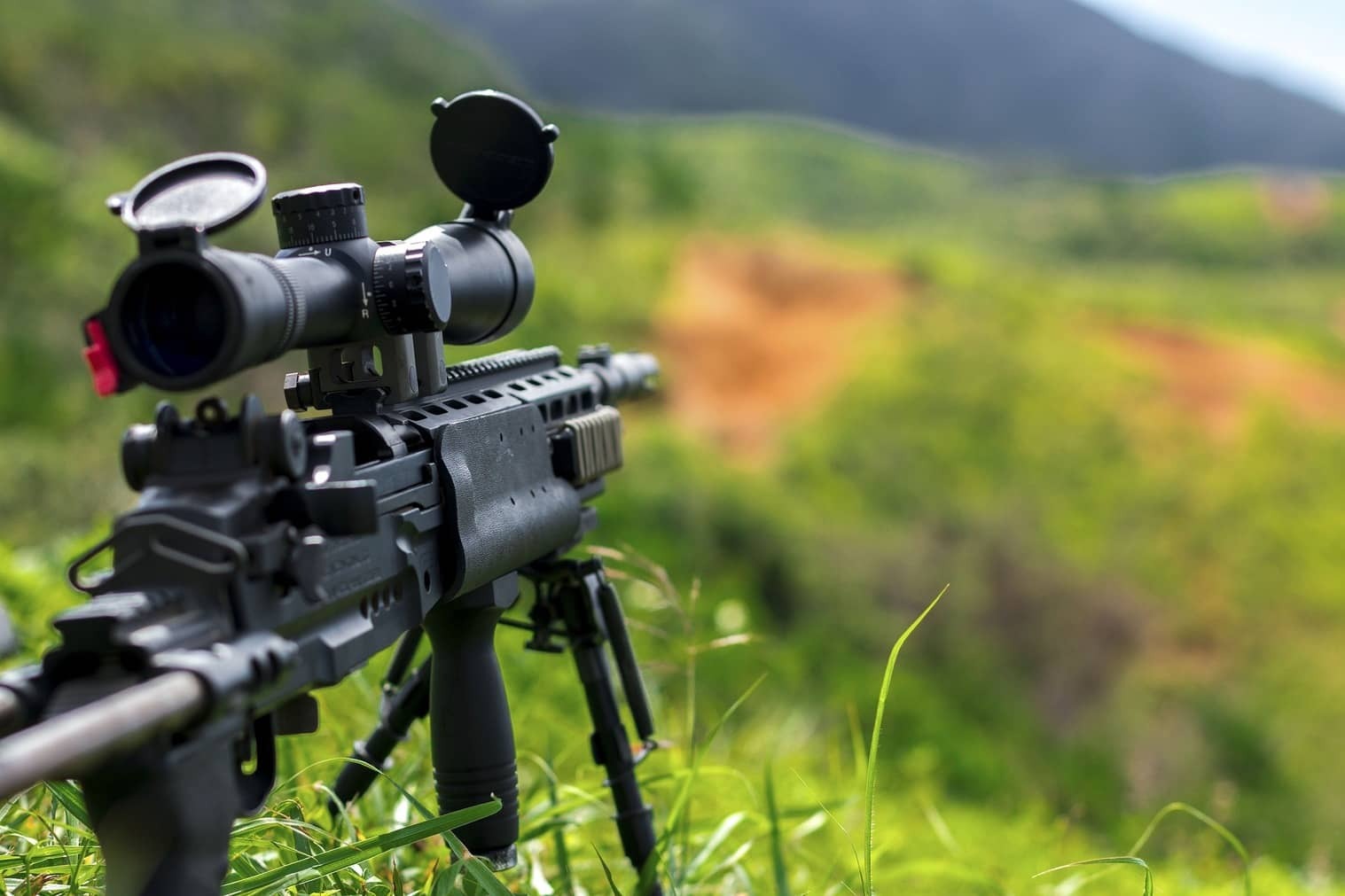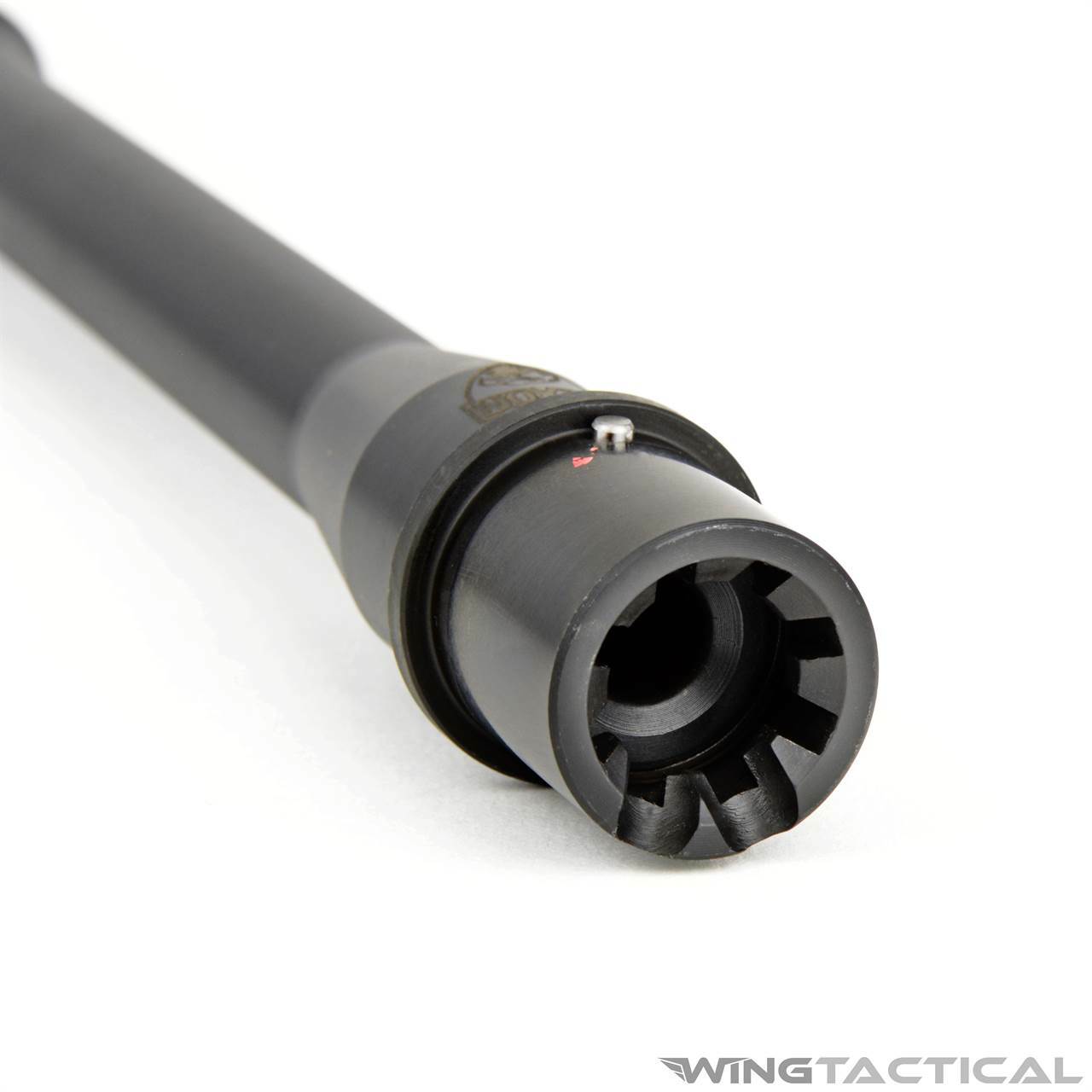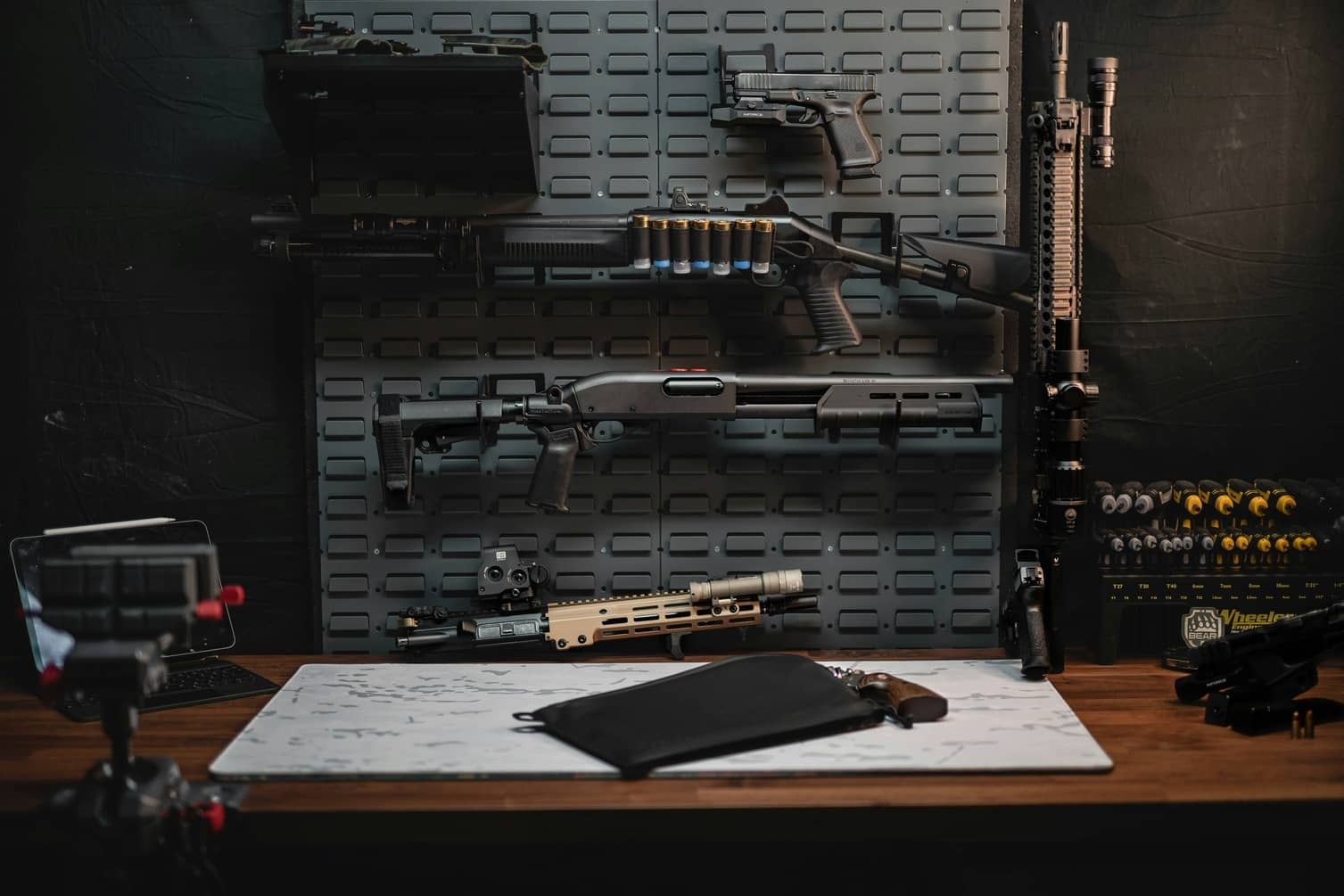
What’s the best way to clean a rifle barrel? Luckily, all you’ll need to get your barrel sparkling and back in action is time and a few simple supplies you likely already have at your workbench.
But should you disassemble your rifle just to clean the barrel? What should you do about rust? Should you use a bore snake or a cleaning rod?
If you’re not sure where to start, stay tuned; in this guide, we’re breaking down how to clean a rifle barrel step by step and offering post-cleaning tips for success.
The Best Way to Clean a Rifle Barrel: 6 Simple Steps
Let’s break down a simple procedure for how to clean a rifle barrel after a long range day, a successful hunting season, or a long time spent in the safe.
#1 Gather Supplies
First, gather up the few tools and supplies you’ll need for cleaning:
- A gun-cleaning solution
- A bore snake or metal cleaning rod
- Cotton rounds, if you’re using a cleaning rod
- Steel wool (for rusty barrels and persistent grime)
- A cleaning rag (or an old t-shirt)
- Gun oil
#2 Complete a Safety Check
Supplies in hand, the next step in how to clean a rifle barrel is to make sure you’re safe to operate. After clearing a space at your workbench:
- Move any ammunition boxes away from your workbench out of an abundance of caution
- Remove the magazine and move it away from your bench
- Open the action and confirm that the chamber is empty
While cleaning your rifle is a simple task, safety should still be your top priority—whether you’re cleaning an AR-15 barrel after a range day or cleaning your gear after deer season ends. Since you’ll be looking down your barrel throughout the process, checking the action for a live round is paramount.
#3 Disassemble Your Rifle (Optional)
While you don’t need to disassemble your rifle every time you clean a rifle barrel, you still need to know how to do it. We recommend removing it from the receiver if:
- You want to remove surface debris from the underside of the barrel, or
- It’s been a while since you last cleaned your rifle
If you opt to disassemble, this is an excellent chance to clean the rest of your firearm, too. We recommend disassembling your rifle for a full clean at least twice a year.
#4 Remove Surface Debris
Whether you remove the barrel or leave your rifle assembled, the best way to clean a rifle barrel is to start by removing any surface debris. There are a few ways to do this:
- Use a clean rag for simple dust or range dirt
- Use your cleaning solution and a rag for caked-on debris
- Scrub lightly with an oiled piece of steel or brass wool to remove rust
Cleaning the barrel's exterior can help prevent long-term damage from rust and dirt buildup. The integrity of your barrel’s exterior is just as important as its interior.

#5 Clean the Barrel
Speaking of how to clean the interior, there are two tools you can use for the inside of your rifle barrel:
- A bore snake – A piece of braided fabric tied to a piece of cord, sometimes with abrasive brass or steel woven in
- A cleaning rod – A metal rod (typically with a plastic handle) with a pointed tip
Bore snakes and cleaning rods are typically made for specific calibers, and choosing the right size is key. If your snake or rod is too small, it might take more passes to clean your barrel thoroughly; if it’s too big, it may not fit (or it might get stuck).
When using a bore snake, we recommend feeding the cord through the receiver and pulling it through the end of the barrel instead of the other way around. This will keep you from pulling dirt and powder into your action.
If you’re using a cleaning rod, attach a clean patch to the end of it before inserting it into the barrel. And if you’re using a cleaning rod, you should strongly consider removing your barrel first to avoid pushing debris into your action.
Spray your patch or the end of your bore snake with gun oil for a more effective, efficient clean.
#6 Oil and Reassemble Safely
When you’re done cleaning, oil any components you’ve removed and reassemble your firearm. Oiling is especially important if you use a solvent-based cleaner during the process. The last substance to touch your components before reassembly and storage should be oil—wipe any excess with a clean rag.
Post-Cleaning Steps for Pros
After you’re done cleaning your rifle barrel (or perhaps your whole rifle), how can you keep it maintained and stored? These two tips will help you keep your rifle safe and operational.
Superior Storage
Keeping your rifle in a low-dust environment can reduce your overall cleaning load and prevent additional wear and tear—a secure safe is an ideal environment, but boxes and cabinets can also protect firearms from dust.
We also recommend using a moisture absorber like silica gel packets or a similar product in your storage space. These can help keep your storage area dry and prevent rust.
Fouling Shots
Solvents and oil can impact ballistics; to make sure your rifle fires accurately when it counts, we recommend taking a fouling shot after cleaning. You don’t need to take a fouling shot right after cleaning, but just remember that your first shot out of a freshly cleaned barrel might not perform as expected.
If you’re wondering how to clean your rifle barrel while sighting in a new optic or testing a new round, remember that your post-cleaning fouling shot shouldn’t be included in your grouping if you’re considering making optic adjustments.

Wing Tactical: Where Gun Enthusiasts Find the Best Aftermarket Firearm Parts and Accessories
Learning how to clean a rifle barrel is a must for responsible gun owners who shoot regularly; cleaning will extend the life of your firearm and help your ammunition perform as expected at the range or in the field.
No matter your typical shooting context, Wing Tactical has the supplies you need to tailor your firearm to your exact specifications and aesthetic preferences. Our collection of aftermarket gun parts includes only the highest quality components from today’s top manufacturers.